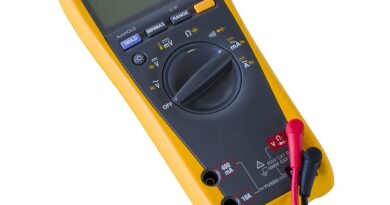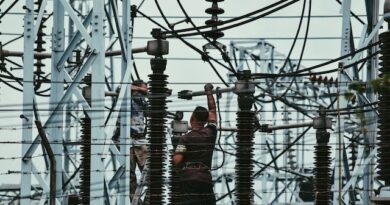Power Up: Top Tips for Successful Electrical Testing in Faridabad and Peace of Mind
Introduction
Electrical testing plays a crucial role in preventing hazards, reducing downtime, and maintaining the overall efficiency of your electrical systems. So, let’s dive into the world of electrical testing and discover the key insights that will empower you to keep your electrical infrastructure in Faridabad in top-notch condition.
Table of Contents
- Understanding the Importance of Electrical Testing
- Preparing for Electrical Testing: Essential Steps
- Hiring a Professional Electrical Testing Service
- Types of Electrical Testing
- 4.1 Insulation Resistance Testing
- 4.2 Earth Resistance Testing
- 4.3 RCD Testing
- 4.4 Thermal Imaging
- Compliance with Electrical Safety Standards
- Regular Maintenance and Inspection
- Troubleshooting and Problem Resolution
- Ensuring Safety During Electrical Testing
- Benefits of Electrical Testing
- Frequently Asked Questions (FAQs)
1. Understanding the Importance of Electrical Testing
Electrical testing is the process of assessing the performance, safety, and reliability of electrical systems. It involves a comprehensive examination of various components, including wiring, circuits, equipment, and connections. By conducting regular electrical testing, you can identify potential faults, mitigate risks, and prevent electrical accidents such as fires, electric shocks, or equipment failures.
2. Preparing for Electrical Testing: Essential Steps
Before initiating the electrical testing process, it’s essential to take certain preparatory measures to ensure a smooth and successful operation. Here are some key steps to consider:
2.1 Conduct a Preliminary Inspection
Perform an initial visual inspection of your electrical systems to identify any visible signs of damage, loose connections, or outdated equipment. This step helps in assessing the overall condition of your electrical infrastructure and allows you to prioritize areas that require immediate attention.
2.2 Document Electrical System Information
Maintain detailed records of your electrical system, including the location of electrical panels, equipment specifications, and previous maintenance history. This documentation facilitates effective planning, troubleshooting, and future maintenance activities.
2.3 Notify Occupants or Stakeholders
If you are conducting electrical testing in a commercial or shared space, inform the occupants or stakeholders about the scheduled testing. Clear communication ensures minimal disruption and helps everyone prepare for any necessary power interruptions during the testing process.
3. Hiring a Professional Electrical Testing Service
While some electrical testing procedures can be performed by knowledgeable individuals, it is highly recommended to engage the expertise of a professional electrical testing service. A skilled team of technicians possesses the necessary tools, knowledge, and experience to conduct comprehensive testing, interpret results accurately, and provide appropriate recommendations for repairs or upgrades.
4. Types of Electrical Testing
To ensure a thorough assessment of your electrical systems, different types of electrical testing are conducted. Let’s explore some common testing methods:
4.1 Insulation Resistance Testing
Insulation resistance testing measures the quality of insulation in cables, wires, and other electrical components. It helps identify potential insulation breakdowns, moisture ingress, or aging issues that may lead to electrical faults or short circuits.
4.2 Earth Resistance Testing
Earth resistance testing determines the resistance value between the electrical system and the ground. It ensures proper grounding, which is essential for protecting against electrical surges, static discharge, and the safe dissipation of fault currents.
4.3 RCD Testing
Residual Current Device (RCD) testing examines the functionality of safety switches installed in electrical systems. RCDs are designed to quickly disconnect the power supply when a leakage or fault current is detected, minimizing the risk of electric shocks or fires.
4.4 Thermal Imaging
Thermal imaging involves the use of infrared cameras to detect abnormal heat patterns in electrical equipment. This non-intrusive testing method helps identify overheating components, loose connections, or potential fire hazards.
5. Compliance with Electrical Safety Standards
Electrical testing ensures compliance with local electrical safety standards and regulations. By adhering to these standards, you demonstrate your commitment to safety, protect your property and occupants, and avoid legal penalties or liabilities.
6. Regular Maintenance and Inspection
Electrical testing is not a one-time activity; it should be part of a comprehensive maintenance program. Regular inspections, along with periodic testing, help identify early signs of wear and tear, equipment degradation, or potential hazards, allowing timely interventions and preventive measures.
7. Troubleshooting and Problem Resolution
Electrical testing plays a critical role in troubleshooting electrical issues. By conducting diagnostic tests and analyzing the test results, you can pinpoint the root cause of electrical problems and implement effective solutions to rectify them promptly.
8. Ensuring Safety During Electrical Testing
Safety is paramount during electrical testing activities. Follow these essential safety practices to protect yourself, your team, and the integrity of your electrical systems:
- Wear appropriate personal protective equipment (PPE) such as gloves, safety glasses, and insulated footwear.
- De-energize the circuits and equipment before commencing any testing or maintenance work.
- Use lockout/tagout procedures to isolate the electrical system from the power source and prevent accidental re-energization.
- Follow proper electrical testing procedures and adhere to all safety guidelines and protocols.
9. Benefits of Electrical Testing
The benefits of regular electrical testing are numerous. Here are a few key advantages:
- Enhanced safety for occupants and property
- Improved energy efficiency and reduced utility costs
- Minimized downtime and improved system reliability
- Early detection and prevention of electrical faults or failures
- Compliance with safety standards and regulations
- Protection against electrical fires, shocks, and accidents
Conclusion
Electrical testing is the cornerstone of a safe and efficient electrical system in Faridabad. By following the tips and guidelines outlined in this article, you can ensure successful electrical testing, maintain peace of mind, and safeguard your property, occupants, and investments. Remember, regular maintenance, professional assistance, and a proactive approach are key to maximizing the performance and longevity of your electrical infrastructure.
FAQs (Frequently Asked Questions)
- Q: How often should electrical testing be performed?
- A: The frequency of electrical testing depends on various factors, including the type of property, usage, and applicable regulations. It is advisable to consult with a professional electrical testing service to determine the appropriate testing intervals.
- Q: Can I perform electrical testing on my own?
- A: While some basic checks can be done by individuals, comprehensive electrical testing should be carried out by trained professionals who possess the necessary knowledge and equipment.
- Q: What happens if electrical faults are detected during testing?
- A: If electrical faults are identified during testing, a professional electrical testing service can provide recommendations for repairs, replacements, or upgrades to rectify the issues and ensure a safe and reliable electrical system.




